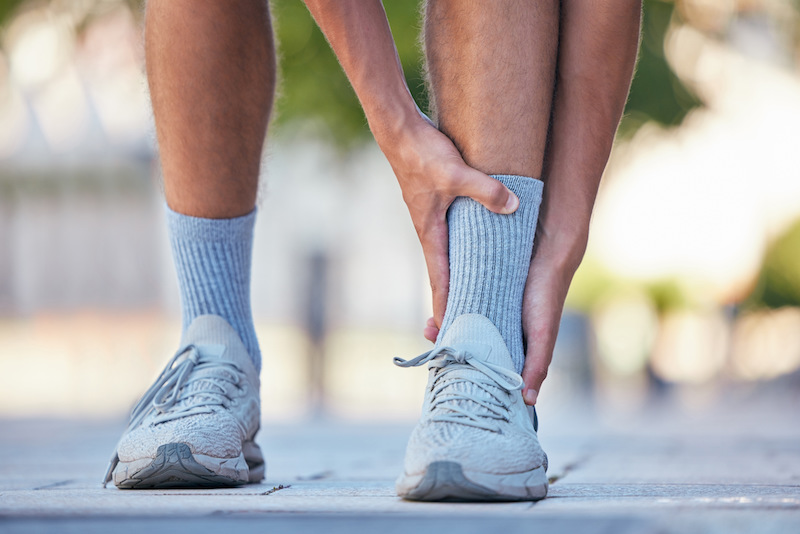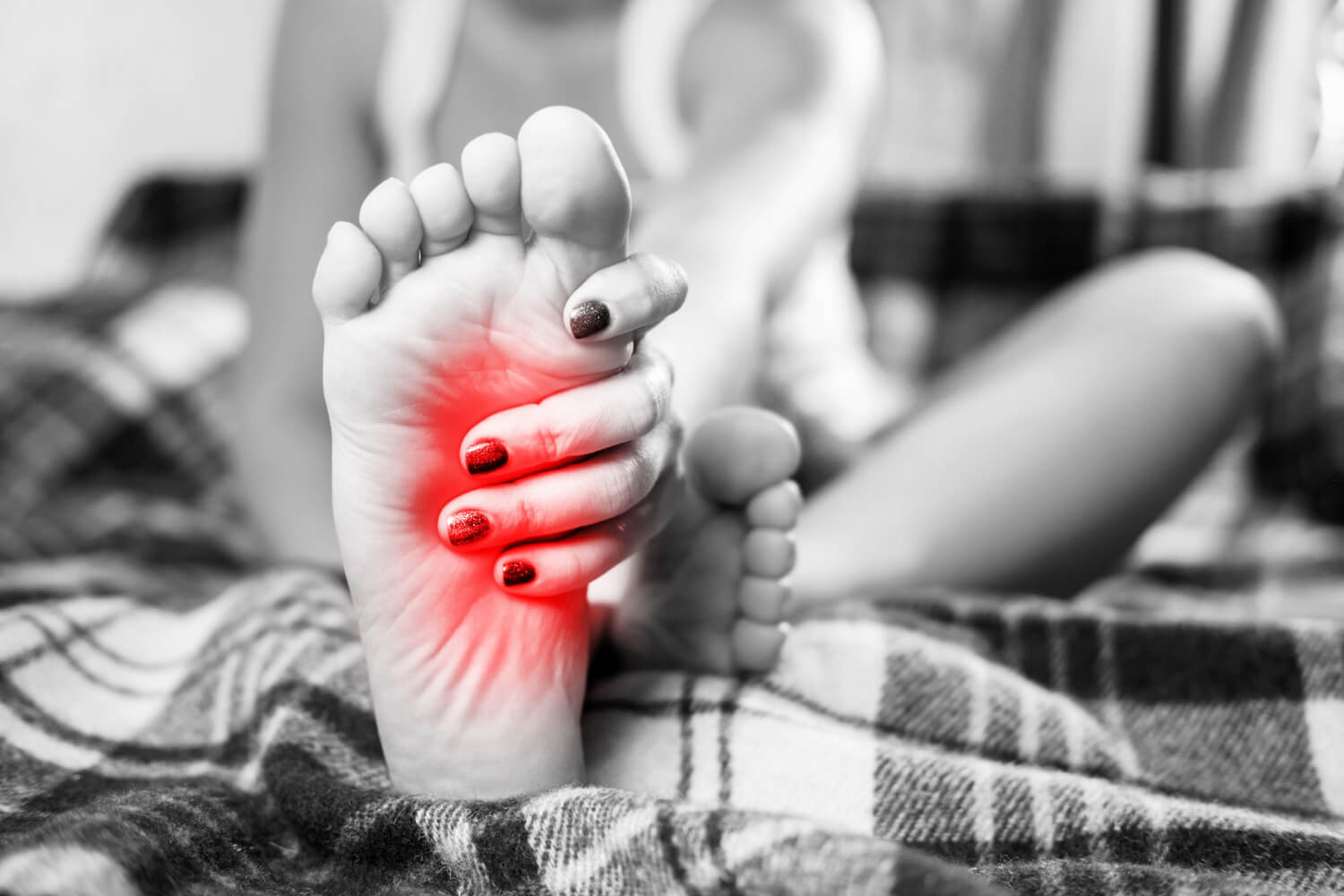Foot and ankle arthritis can significantly affect your daily life, causing pain, stiffness, and limited mobility. As joints that bear your body weight with every step, the foot and ankle are especially prone to wear and tear over time. When arthritis sets in, these joints may become inflamed, swollen, and increasingly difficult to move, making even basic activities such as walking, climbing stairs, or standing for long periods challenging. Understanding this condition, its symptoms, and the latest treatment options can make a profound difference in your ability to manage pain and maintain an active lifestyle.
At Garden State Foot & Ankle Group, we specialize in diagnosing and treating conditions related to foot and ankle arthritis. With cutting-edge technologies, personalized care plans, and a patient-first philosophy, we aim to restore your mobility and improve your quality of life. In this blog, we’ll explore the key symptoms to watch for, the causes of arthritis in the lower extremities, and how modern treatment options — both surgical and non-surgical — can help you find lasting relief.
Understanding Foot and Ankle Arthritis
Foot and ankle arthritis refers to the inflammation and deterioration of the joints located in the lower extremities. The most commonly affected joints include the ankle (tibiotalar joint), the subtalar joint beneath the ankle, and the big toe joint. Arthritis can result from normal wear and tear (osteoarthritis), autoimmune diseases like rheumatoid arthritis, or previous injuries that destabilize the joint.
The structure of the foot and ankle involves 33 joints working together to provide stability and movement. When any of these joints become inflamed or damaged, movement becomes painful and limited. Over time, cartilage — the smooth tissue that cushions the ends of bones — can wear away, leading to bone-on-bone friction. As the condition progresses, bone spurs may develop, and the joint may become deformed or lose its function entirely.
There are several types of arthritis that can affect the foot and ankle:
- Osteoarthritis: Often due to aging, this degenerative form causes the cartilage between bones to deteriorate gradually. It typically affects weight-bearing joints and progresses slowly, often beginning in the big toe joint.
- Rheumatoid Arthritis: An autoimmune disease where the immune system attacks joint linings, causing severe inflammation. This can affect multiple joints at once and often leads to joint deformities if left untreated.
- Post-Traumatic Arthritis: Develops after an injury, such as a fracture or dislocation, even years after the event. Previous trauma can accelerate cartilage wear, making this a common cause in younger, more active individuals.
Recognizing which type of arthritis is present is critical to determining the most appropriate treatment plan.
Common Symptoms of Foot and Ankle Arthritis

Symptoms of foot and ankle arthritis may develop slowly and worsen over time. While some discomfort may initially be dismissed as fatigue or minor strain, it’s important to recognize when pain and stiffness may signal something more serious. Early diagnosis can prevent further joint damage and improve treatment outcomes.
The most common symptoms include persistent pain, especially during or after activity. Swelling around the joints, reduced flexibility, and a noticeable decrease in range of motion are also key indicators. In many cases, patients experience stiffness after periods of rest — particularly in the morning — that improves with mild activity. As the condition advances, walking may become difficult, and wearing certain shoes can become painful.
You may also notice:
- Grinding or popping sensations in the joint: These may result from bone-on-bone contact due to cartilage loss and are a common early sign of joint degeneration.
- Visible swelling or deformities: Joint inflammation can lead to noticeable puffiness and changes in foot shape, especially near the big toe or ankle.
- Tenderness to touch: Even gentle pressure on the affected area may provoke discomfort or a throbbing sensation, especially after activity.
- Changes in your walking pattern or posture: You may begin to limp or shift weight to avoid pain, which can cause secondary issues in your knees, hips, or back.
- Increased fatigue due to overcompensation from other joints: When one joint is in pain, the others pick up the slack, which can lead to whole-body fatigue and imbalance.
If these symptoms persist or affect your ability to perform daily tasks, it’s crucial to consult a specialist. At Garden State Foot & Ankle Group, we use diagnostic imaging and clinical evaluations to pinpoint the source of your discomfort and create an individualized care plan.
Diagnosing Foot and Ankle Arthritis
Diagnosing foot and ankle arthritis involves a combination of physical examination, medical history, and advanced imaging studies. During your visit, your physician will assess joint tenderness, swelling, range of motion, and the alignment of your foot and ankle. You’ll be asked about the frequency and severity of your symptoms, your daily routine, and any past injuries.
X-rays are the most common imaging tool used to detect joint space narrowing, bone spurs, and deformities associated with arthritis. In more complex cases, MRI scans may be ordered to evaluate soft tissues, cartilage damage, and underlying bone changes. Blood tests can also be useful, particularly if autoimmune forms of arthritis like rheumatoid arthritis or gout are suspected.
Early detection is key to preventing further joint degeneration. Once a diagnosis is confirmed, your care team will develop a treatment strategy that focuses on reducing inflammation, alleviating pain, and preserving joint function. In many cases, conservative options provide substantial relief without the need for surgery.
Modern Non-Surgical Treatments
Fortunately, many patients with foot and ankle arthritis can manage their symptoms effectively through non-surgical treatments. These therapies aim to reduce inflammation, relieve pain, and improve mobility while preserving the integrity of the joint. At Garden State Foot & Ankle Group, we emphasize conservative care whenever possible.
Some of the most common non-surgical treatments include:
- Orthotic Inserts: Custom-made shoe inserts can redistribute pressure and improve alignment. These devices are often used to reduce the strain on affected joints and can be worn in most types of footwear.
- Medications: NSAIDs (non-steroidal anti-inflammatory drugs) help reduce inflammation and discomfort. Over-the-counter options like ibuprofen are effective, but prescription-strength versions may be used in more severe cases.
- Corticosteroid Injections: Direct injections into the affected joint can provide temporary relief. These are especially helpful during flare-ups and can delay the need for surgery when used as part of a broader treatment plan.
- Physical Therapy: Strengthening exercises and joint mobilization can enhance flexibility and support. Therapists can also teach gait training and movement modifications to minimize stress on arthritic joints.
- Bracing or Support Devices: Wearing a brace can stabilize the joint and prevent further damage. Braces can be customized for specific joints and are helpful in reducing pain during activity or daily routines.
These treatment options often work well in combination and are tailored to the individual’s lifestyle and severity of arthritis. In cases where pain persists despite these measures, surgical intervention may be considered.
Surgical Treatments and When They’re Necessary
For advanced cases of foot and ankle arthritis that do not respond to conservative care, surgical intervention may be the best path forward. Surgery can relieve pain, restore joint function, and prevent further structural damage. The decision to pursue surgery is based on factors like age, activity level, joint stability, and the extent of cartilage loss.
Common surgical procedures include:
- Arthroscopic Debridement: Minimally invasive surgery to remove loose cartilage or bone spurs. This option is ideal for early to moderate arthritis and can help smooth out joint surfaces.
- Joint Fusion (Arthrodesis): Fuses bones together to eliminate pain caused by joint movement. This procedure is highly effective in pain relief and is commonly performed on the big toe, midfoot, and ankle.
- Joint Replacement (Arthroplasty): Replaces the damaged joint with an artificial implant. Total ankle replacement is less common than knee or hip replacement but can offer excellent outcomes in properly selected patients.
Joint fusion is commonly used for the big toe or midfoot, while ankle replacement is an option for patients with severe arthritis but good bone quality. Recovery varies depending on the procedure, but post-operative care often includes physical therapy, limited weight-bearing, and gradual return to activity. Our team at Garden State Foot & Ankle Group will guide you through every step of the recovery process to ensure the best outcome.
Living Well with Foot and Ankle Arthritis
A diagnosis of foot and ankle arthritis doesn’t have to mean the end of an active lifestyle. With the right care plan, many individuals can manage their symptoms and enjoy daily life with minimal discomfort. Lifestyle modifications — such as maintaining a healthy weight, wearing supportive footwear, and staying active with low-impact exercise — play a crucial role in preserving joint health.
It’s also important to stay proactive with your care. Regular check-ins with your podiatrist, monitoring symptoms, and adjusting your treatment plan as needed can help you stay ahead of the disease. Support from family, physical therapists, and your healthcare team can make all the difference in maintaining motivation and consistency.
At Garden State Foot & Ankle Group, we believe that long-term management of foot and ankle arthritis is best achieved through a collaborative approach. Whether you’re newly diagnosed or seeking relief from chronic pain, our goal is to help you regain function, reduce discomfort, and improve your quality of life through every stage of treatment.
Contact Garden State Foot & Ankle Group
Toms River Office
📍 664 Commons Way Building 1
Toms River, NJ 08755
📞 Phone: (732) 557-9900
📧 Email: gsfagroup@gmail.com
Belleville Office
📍 1 Clara Maas Drive
Belleville, NJ 07109
📞 Phone: (973) 450-3035
🌐 Website: gsfagroup.com


0 Comments